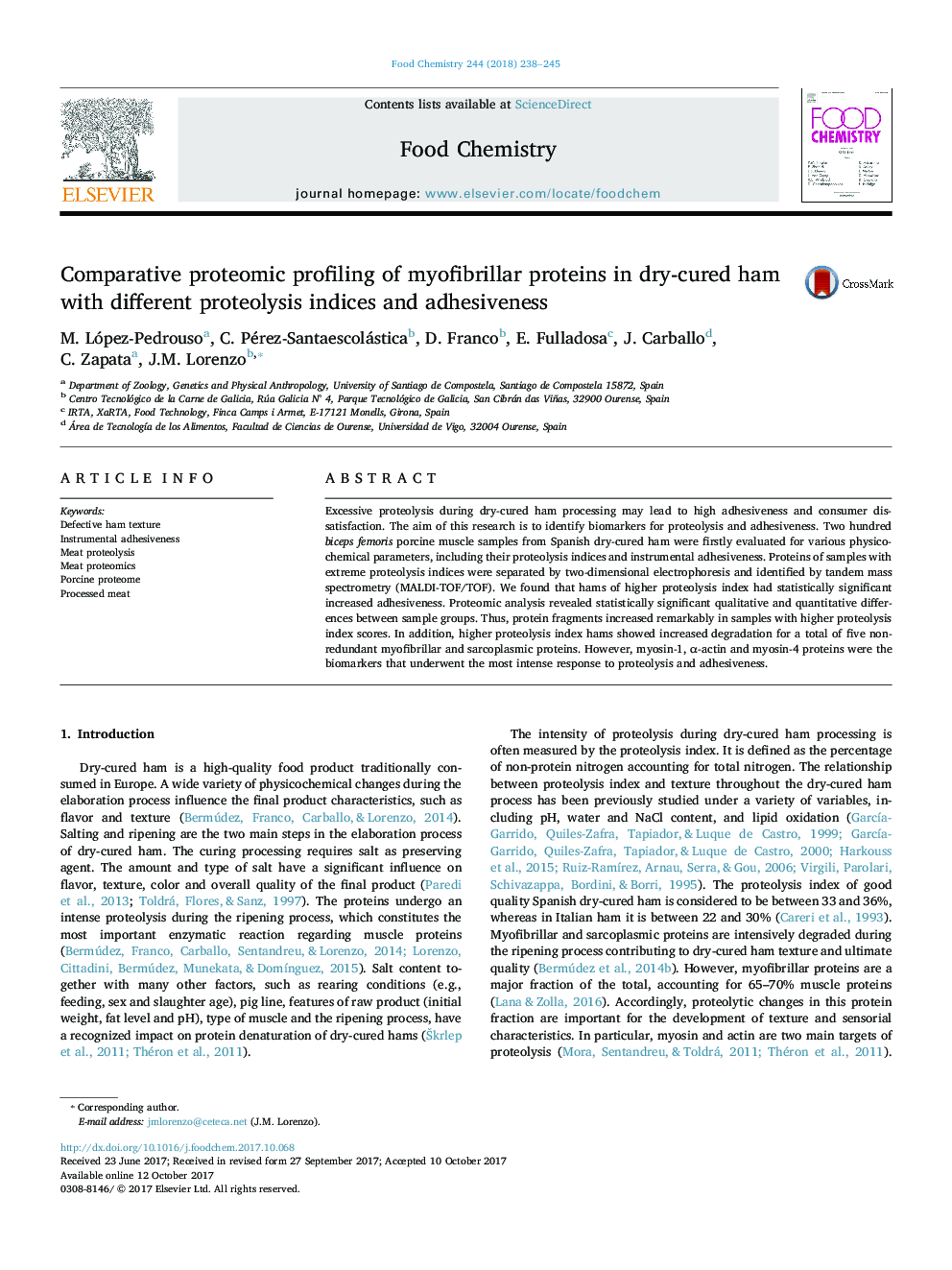| Article ID | Journal | Published Year | Pages | File Type |
|---|---|---|---|---|
| 5132407 | Food Chemistry | 2018 | 8 Pages |
â¢Instrumental adhesiveness was assessed for the first time in dry-cured ham.â¢The proteolysis index is a reliable indicator of proteome degradation.â¢Differential adhesiveness is dependent on the proteolysis index.â¢Myosin-1, myosin-4 and actin underwent the strongest response to proteolysis.â¢Novel candidate biomarkers for proteolysis and adhesiveness.
Excessive proteolysis during dry-cured ham processing may lead to high adhesiveness and consumer dissatisfaction. The aim of this research is to identify biomarkers for proteolysis and adhesiveness. Two hundred biceps femoris porcine muscle samples from Spanish dry-cured ham were firstly evaluated for various physicochemical parameters, including their proteolysis indices and instrumental adhesiveness. Proteins of samples with extreme proteolysis indices were separated by two-dimensional electrophoresis and identified by tandem mass spectrometry (MALDI-TOF/TOF). We found that hams of higher proteolysis index had statistically significant increased adhesiveness. Proteomic analysis revealed statistically significant qualitative and quantitative differences between sample groups. Thus, protein fragments increased remarkably in samples with higher proteolysis index scores. In addition, higher proteolysis index hams showed increased degradation for a total of five non-redundant myofibrillar and sarcoplasmic proteins. However, myosin-1, α-actin and myosin-4 proteins were the biomarkers that underwent the most intense response to proteolysis and adhesiveness.
